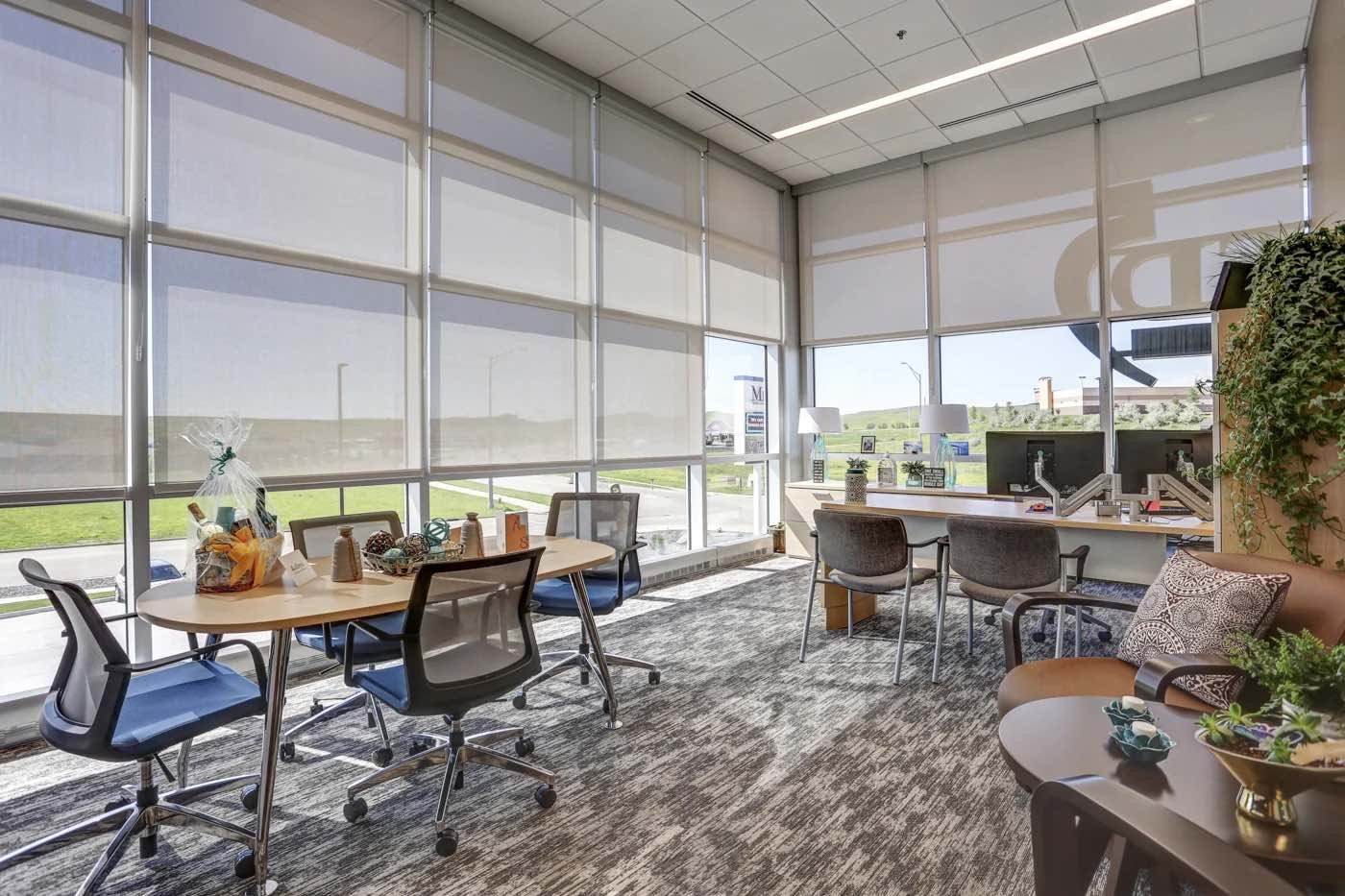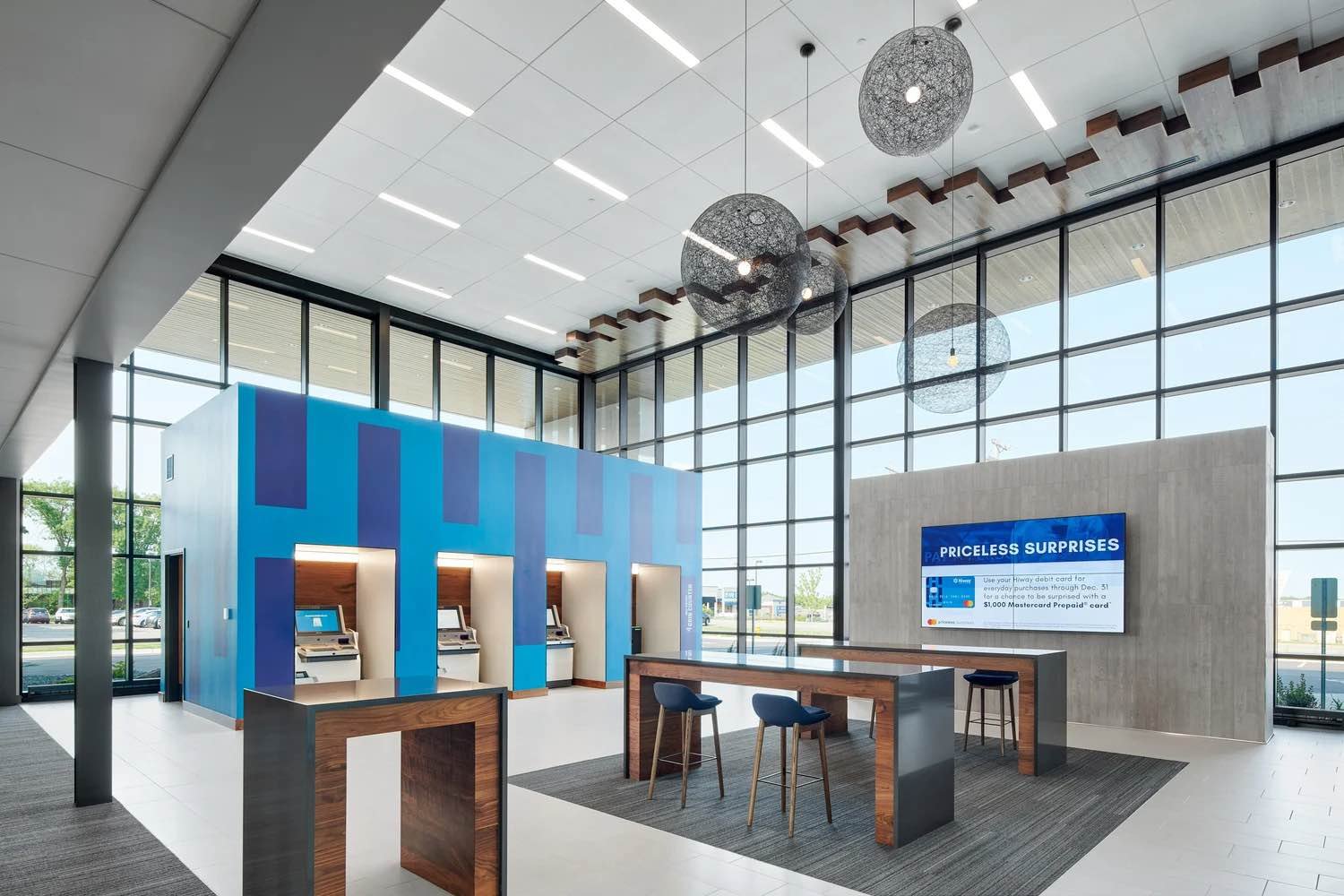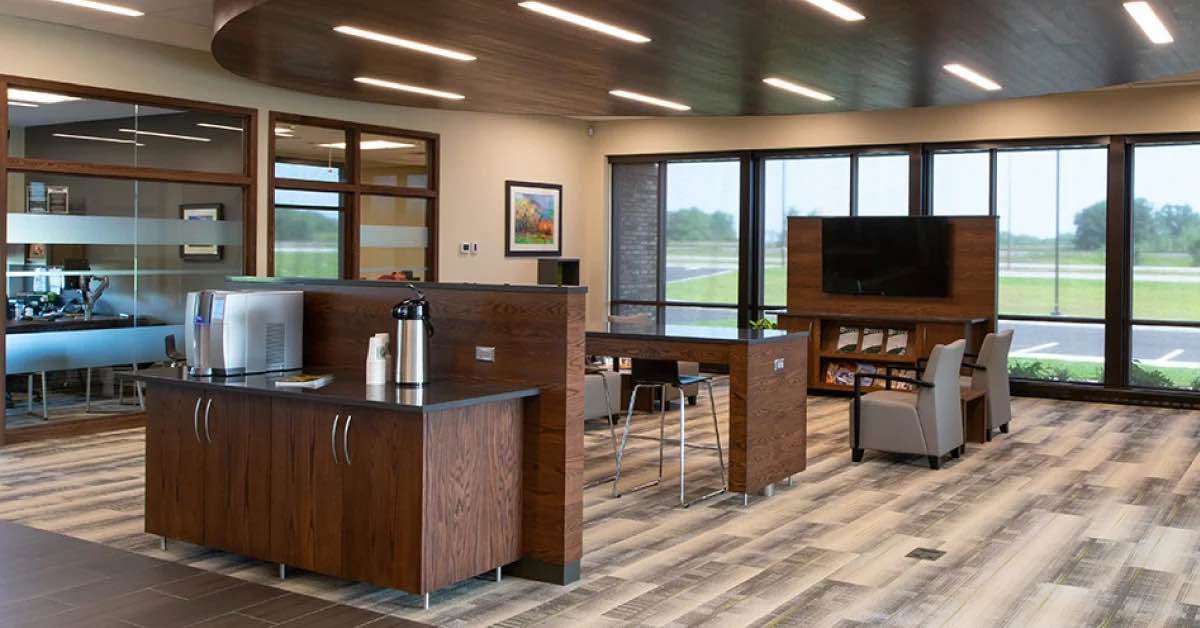9 Design Trends To Use for Creating a Welcoming Bank Interior
Bank interiors have changed over the years. They've transformed from hotel-like interiors with dark wood, upholstery and finishes to open spaces with clean lines and refreshing aesthetics.
While design trends will ebb and flow, it's important to note how banks of the past were primarily focused on being banks. They had a signature look that was formal, business-like and ornate or ornamental to match the expectations of their customers.
But today's banks are shedding the formal and heavy for the airy, bright and open, consistent with other retail businesses. Keep reading to learn how the following design trends create a welcoming atmosphere.
Why Is Contemporary Bank Interior Design Important?
Online banking has changed bank interior design. With many basic transactions happening online, banks now focus their physical spaces on specialized services like loans, mortgages, investments and business services. Today’s bank interiors should aim to provide a welcoming environment where customers can develop relationships with bank professionals and access ancillary services.
Bank Design Trends That Create a Welcoming Environment
Your bank’s interior design should aim to create an enjoyable, convenient experience for customers seeking financial expertise and services. Here are a few notable trends that enhance the customer experience and increase foot traffic.
1. Less Paper, Display and Storage Space
Most transactional banking can be done via laptops and personal computers, reducing pen and paper transactions. Small, freestanding concierge stations and self-serve ATMs and ITMs are replacing the old-fashioned teller line, freeing customer service reps and tellers to greet customers at the front door. This helps to create an accessible, inviting space for customers while providing comfort, accessibility and appeal to customers.
2. Wide Open Spaces
Gone are the days of stuffy, closed-off bank interiors. Current bank design favors open and transparent spaces. This design approach fosters a sense of trust and transparency between customers and the bank staff. Glass partitions and open floor plans allow for better visibility and communication, making customers feel more connected to the banking process. It also adds a contemporary touch to your bank's overall appearance.
3. Personalization and Privacy
While open spaces are essential, offering areas of privacy and personalization is equally important. Customers often require discrete spaces for confidential discussions. Create private meeting rooms or consultation areas where clients can discuss financial matters securely and comfortably. Key trends include:
Smaller lobbies with more technology
More private meeting rooms
Open, casual consultation spaces
Creative designs that enhance privacy and experience
The goal is to reimagine offices as an integral part of an enjoyable customer and employee experience.
4. Smart Technology
In today's digital age, customers expect seamless and efficient service. Incorporating smart technology into your bank's interior design can significantly enhance the customer experience. Consider installing things like:
Digital kiosks for quick transactions
Interactive screens for viewing product information, news, events and more
AI-powered chatbots for customer inquiries
These technological advancements make banking more convenient and demonstrate your bank's commitment to innovation.
5. Neutral Color Palettes
When it comes to creating a welcoming bank interior, the choice of colors matters significantly. Opt for a neutral color palette that exudes sophistication and professionalism. Shades of white, gray and beige create a timeless and elegant ambiance. These colors also make it easier to seamlessly incorporate branding elements, such as your bank's logo and signage, into the design.
6. Increased Accessibility
Accessibility is a design trend that should never be overlooked. Ensure your bank interior is easily accessible to all, including individuals with disabilities. Install ramps, elevators and accessible restrooms. Moreover, consider the ergonomics of your furniture and counters to accommodate customers of all heights and abilities. An inclusive design approach improves customer satisfaction and aligns with ethical principles.
7. Effective Lighting
Proper lighting can transform the atmosphere of your bank. Choose lighting fixtures that are not only functional but also aesthetically pleasing. Well-placed and adjustable lighting can highlight certain areas, create focal points and set the right mood. Natural lighting is also highly desirable, as it brings warmth and vitality to the space.
8. Showcasing Art and Culture
Art has the power to inspire and evoke emotions. Consider incorporating art and cultural elements into your bank's interior design, including local artwork, sculptures or even historical displays. It not only adds visual interest but also connects your bank to the community, making customers feel a sense of belonging.
9. Co-Branding and Shared Spaces
Open bank designs allow for creative uses of space through co-branding, like integrating coffee shops or other businesses to appeal to customers. As Michael Orth of HomeTown Bank shares,
“The pairing of a local coffee shop, Mocha Monkey, was discussed in great detail and we thought it would be a good fit for us. The basic concept was to design a coffee shop, with a bank wrapped around it. It is hard to tell where the coffee shop stops and where the bank starts.
At any given time throughout the day, I see 10 to 12 non-customers sitting in the shared space. Coffee customers are exposed to the bank employees and brand, and the bank customers are able to get a great cup of coffee.”
Shared community spaces are another trend. Banks make conference rooms accessible for public use after hours, equipped with digital screens, computers, phones, WiFi and speakers. This multi-purpose approach increases traffic and creates a community feel.
The goal is inventive spaces that serve customers, non-customers and the community — all while presenting the bank's brand. Blending businesses and sharing spaces provides amenities while showcasing your bank's offerings.
Design a Bank You Can Be Proud Of
The design of your bank interior plays a pivotal role in shaping your customers' experiences. By embracing these design trends, you can create a welcoming and aesthetically pleasing space that not only attracts customers but also retains their loyalty.
Remember that your bank's interior reflects your brand and values, so invest wisely in its design and aesthetics. Discover more ways to upgrade your bank layout in our free co-branding guide!






